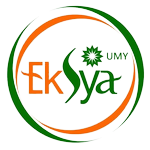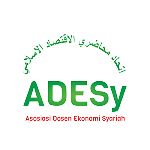Investigating the Methods of Restaurant Rating to Develop Halal Compliance Rating (HCR) Tool Within the Halal Certified Restaurants Globally
DOI:
https://doi.org/10.18196/jiebr.v2i1.32Keywords:
Halal Compliance; Rating; Restaurant; Weighted-average MethodAbstract
This paper reviews the weighted average approach of rating systems among the restaurant industries globally. Such review is crucial to developing Halal Compliance Rating (HCR) tool within the halal-certified restaurants in Malaysia as all as in other parts of the world. Halal-certified restaurants are in the Halal food and beverage (F&B) industry. At this moment, the Halal F&B industry does not have any standard rating method to rate the level of halal compliance practice of halal-certified restaurants. Hence, the objective of the study is to investigate the methods of restaurant rating globally and adopt the best-suited method to develop an HCR tool within halal-certified restaurants. Simultaneously, the study finds and recommends suitable linguistic and symbolic expressions for different ratings of halal compliance. To achieve the objectives, an extensive literature review was carried out. Additionally, to develop the HCR tool, the study used the ten components of halal compliance identified and weighted by Azam (2021). The findings show an example of using and calculating the HCR tool to rate the halal compliance of a restaurant and expressing the ratings linguistically and/or symbolically. Simultaneously, this paper justifies the use of the weighted average approach for rating halal-certified restaurants. Finally, it provides recommendations for future research to establish a standard HCR tool globally.
References
Allahbakhsh, M., & Ignjatovic, A. (2015). An iterative method for calculating robust rating scores. IEEE Transactions on Parallel and Distributed Systems, 26(2), 340–350. https://doi.org/10.1109/TPDS.2013.215
Azam, M. S. E., Abdullah, M. A., & Ahmad, A. N. (2021). Identifying and Measuring the Weights of Halal Compliance Rating (HCR) Components of Best Halal Practices by Applying AHP Method. International Journal of Islamic Business Ethics, 6(2), 104. https://doi.org/10.30659/ijibe.6.2.104-118
Bertan, S. (2020). Restaurant rankings factors in gastronomy tourism. Tourism, 68(1), 34–42. https://doi.org/10.37741/T.68.1.3
Chang, P. T., & Hung, K. C. (2005). Applying the fuzzy-weighted-average approach to evaluate network security systems. Computers and Mathematics with Applications, 49(11–12), 1797–1814. https://doi.org/10.1016/j.camwa.2004.10.042
Commercial Cooperation of the Organization of Islamic Cooperation (COMCEC). (2016). Muslim Friendly Tourism: Understanding the Demand and Supply Sides In the OIC Member Countries. COMCEC Coordination Office, August, 1–148. https://doi.org/10.1371/journal.pone.0074711
Department of Statistics Malaysia. (2017). Economic Census 2016 - Halal Statistics. www.dosm.gov.my
DinarStandard. (2020). State of the Global Islamic Economy Report 2020/21. In State of the Global Islamic Economy Report 2020/21. https://cdn.salaamgateway.com
Guh, Y. Y., Po, R. W., & Lee, E. S. (2008). The fuzzy weighted average within a generalized means function. Computers and Mathematics with Applications, 55(12), 2699–2706. https://doi.org/10.1016/j.camwa.2007.09.009
Just, N., & Show, F. (2019, September 25). Here ’ s Why You Should Care More About That A , B Or C Grade You See On The Walls Of F & B Stores Score-Based Grading. Vulcan Post. https://vulcanpost.com/676378/malaysia-food-restaurant-hygiene-grades/
Macwan, N., & Sajja, P. S. (2013). Performance Appraisal using Fuzzy Evaluation Methodology. International Journal of Engineering and Innovative Technology, 3(3), 324–329.
Mangold, W. G., & Smith, K. T. (2012). Selling to Millennials with online reviews. Business Horizons, 55(2), 141–153. https://doi.org/10.1016/j.bushor.2011.11.001
Olabanji, O. M., & Mpofu, K. (2020). Hybridized fuzzy analytic hierarchy process and fuzzy weighted average for identifying optimal design concept. Heliyon, 6(1). https://doi.org/10.1016/j.heliyon.2020.e03182
Perform, Y. (2019). Performance Review Ratings Scales - Examples. PerformYard Blog. https://blog.performyard.com/performance-review-ratings-scales-examples
Rahman, I. N. A., Saleh, R., Rahman, S. A., & Hashim, D. (2012). A Review on factors of non-compliance of halal standards among restaurant operators in kuala lumpur. In International Business Management (Vol. 6, Issue 6, pp. 611–620). https://doi.org/10.3923/ibm.2012.611.620
Research, B. (2021). Global Halal Food & Beverage Market Overview, 2026. https://www.researchandmarkets.com/
Røtterud, O. J., Gravning, G. E. N., Hauge, S. J., & Alvseike, O. (2020). Hygiene performance rating—An auditing scheme for evaluation of slaughter hygiene. MethodsX, 7, 100829. https://doi.org/10.1016/j.mex.2020.100829
Schöttle, A., & Arroyo, P. (2017). Comparison of Weighting-Rating-Calculating, Best Value, and Choosing by Advantages for Bidder Selection. Journal of Construction, Engineering, and Management, 1(1), 143 (8). https://doi.org/10.1061/(ASCE)CO.1943-7862.0001342
Thomson Reuters and DinarStandard. (2018). State of Global Islamic Economy Report 2018/19. In Dubai International Financial Centre. https://haladinar.io/hdn/doc/report2018.pdf
Thomson Reuters and DinarStandard. (2019). State of the Global Islamic Economy Report 2019/20. Dubai International Financial Centre, 1–174. https://haladinar.io/hdn/doc/report2018.pdf
Vlasenko, T., Hatsko, A., Larina, T., Hryn, Y., Streimikiene, D., & Balezentis, T. (2019). Fuzzy evaluation of change management processes in the context of enterprise sustainability. Sustainability (Switzerland), 11(22). https://doi.org/10.3390/su11226310
Yee, C. C., & Chen, Y. Y. (2009). Performance Appraisal System using Multifactorial Evaluation Model. International Scholarly and Scientific Research & Innovation, 3(5), 304–308.
Yousif, M. K., & Shaout, A. (2018). Fuzzy logic computational model for performance evaluation of Sudanese Universities and academic staff. Journal of King Saud University - Computer and Information Sciences, 30(1), 80–119. https://doi.org/10.1016/j.jksuci.2016.08.002
Downloads
Published
How to Cite
Issue
Section
License
Copyright (c) 2022 Journal of Islamic Economic and Business Research

This work is licensed under a Creative Commons Attribution-NonCommercial 4.0 International License.
Journal of Islamic Economic and Business Research has CC-BY NC or an equivalent license as the optimal license for the publication, distribution, use, and reuse of scholarly work for non-commercial purpose. The non-commercial use of the article will be governed by the Creative Commons Attribution license as currently displayed on Creative Commons Attribution-NonCommercial 4.0 International License
Creative Commons License




